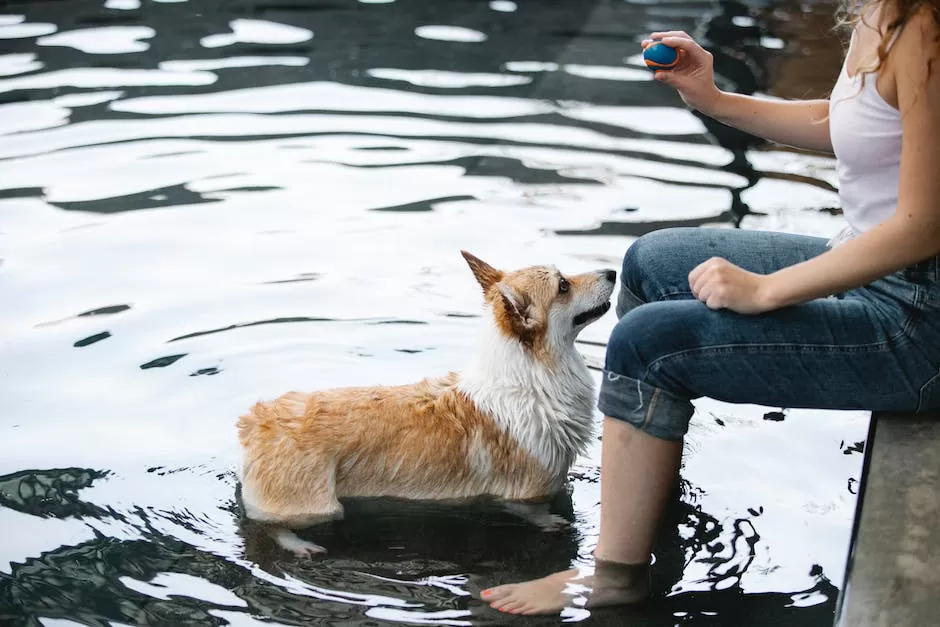How do you teach a dog no?

There are a few different ways that you can teach a dog no. One way is to use a hand signal along with the word no. For example, you can say no and then put your hand out in front of the dog’s nose. Another way to teach a dog no is to say the word no in a firm voice and then follow it with a short leash correction.
There are a few different ways to teach a dog no. One way is to use a command such as “no” or “leave it” and then pair it with a negative consequence such as a brief time out. Another way is to give the dog a command and then if the dog does not obey, make a loud noise or–for a more stubborn dog–give a physical correction such as a leash pop.
What is the no command for a dog?
It’s important to be consistent when teaching your dog a ‘no’ signal. Every time he hears the command, he should stop whatever he is doing. With enough practice, your dog will learn to respond to the command even when you’re not around.
It’s important to keep up with your dog’s training, even after they seem to have grasped the concept. As they progress, you’ll notice they’ll stop lunging and mouthing at your hand. From there, you can keep your hand open and just say the word “No.” But be careful, because they can be sneaky when they see that hand is staying open.
Is it OK to tell your dog no
There is nothing wrong with using the word “no” properly when training your dog. “No” should be said calmly and should mean, “That is not a behavior that I want.” “No” can also be a “no reward marker.” It can just mean that the dog will not get a reward for that behavior.
If you want your dog to learn to stop barking, jumping, or pulling, you need to teach them what TO do instead. Dogs learn by association, so if you ignore the unwanted behavior and focus on rewarding the desired behavior, your dog will eventually learn what you expect from them.
How do you control a defiant dog?
It is important to start training your puppy as early as possible and to provide them with regular exercise outlets to prevent unruly behaviors from taking hold. waiting until your puppy is six months old to start training can often lead to these disobedient behaviors becoming more ingrained.
You can teach any dog to respond to the ‘no’ command, regardless of age as long as you are willing to put in the necessary work. Younger dogs tend to learn faster and some older dogs “forget” how it works. Since this is one of the first commands you will be teaching your pup, there aren’t any real prerequisites.
What age is puppy hardest to train?
What a roller coaster raising a puppy can be! One minute they are your cute and cuddly little bundle of joy and the next they seem to have turned into a sullen teenager that has forgotten everything you have taught them. This period is known as the adolescent period and while it is different for every dog, it usually begins around eight months old and can last until they are two years old. During this time, it is important to be as consistent as possible with your pup and to continue with their training. Eventually they will come out of this phase and be your furry best friend again.
This is a difficult stage for many owners because their dog suddenly becomes less responsive to commands and more interested in chasing after other dogs. This is completely normal behavior for a dog that is entering sexual maturity, and the best thing that owners can do is to be patient and consistent with their training. In time, most dogs will settle down and become more manageable once again.
Do dogs understand when you tell them no
It is important to be consistent when using the word “no” with your dog. If you say “no” and then do nothing to back it up, your dog will learn that “no” is irrelevant to him and should be ignored.
There are a variety of ways to say “no” to a dog effectively. Audio cues such as clapping, snapping, or stomping can get their attention. Visual cues such as blocking their way or coming quickly toward them can also be effective. Physical cues like a tug on the leash or a tap to the ribs or hindquarters can also be used to get their attention.
Should you yell no at your dog?
It can be difficult to break the habit of yelling at your dog, but it is important to try. Yelling makes your dog less likely to respond to commands, which can lead to frustration on your part. Instead, use a soft, quiet voice when talking to your dog. This is more likely to get their attention and Cooperation.
If you accidentally step on your pup’s paw and feel bad about it, he may be able to sense your guilt. Studies have shown that dogs can understand human intentions to some degree, so your body language and facial expressions can convey to your pup that this was an accident.
Do dogs hold grudges against you
Dogs have the ability to remember events from the past and hold grudges against other dogs or people. This research clearly shows that dogs have the cognitive and emotional capacities to hold grudges. These memories can persist for a long while, which means that dogs can remember what has happened to them in the past and hold onto those memories. This is an important ability that dogs have, and it shows that they are more complex and sophisticated than we might have originally thought.
If your dog is off-leash, you need an incentive to encourage him or her to come back to you. A really tasty treat or a fun game with a toy may do the trick. Show your dog the toy or food, then run away a couple of paces. Call your dog’s name and say “come” in a friendly, exciting tone. Getting down low may also encourage your dog to come back to you.
How do you discipline a dog that won’t listen?
There are a variety of differentdisciplinary methods that can be used to manage a dog’s behavior. Some of the more common, and generally considered to be more positive and beneficial, methods include using time-outs, putting a stop to unwanted behavior with your voice, taking away their toys, and avoiding giving your dog attention when they misbehave. Time-outs are usually used when a dog is displaying undesirable behaviors like barking excessively or jumping on people. The dog is typically removed from the situation for a short period of time, usually just a minute or two, in order to calm down and reset. Using your voice to stop unwanted behavior is often considered to be more effective than hitting your dog. This includes using a firm, authoritative voice to commands like ‘sit’ or ‘stay’, and using a loud, assertive voice to interrupt and stop behaviors like chewing on furniture or stealing food. Taking away their toys can be an effective disciplinary method for some dogs, especially if the dog is behaving badly in order to get attention. And finally, avoiding giving your dog attention when they misbehave is often recommended as a way to devalue the behavior and discourage it from happening again.
Verbal or physical discipline is not an effective way to prevent bad behavior. Your dog will simply learn to fear you. For example, hitting your dog after they urinate in the house might just cause them to hide where they urinate.
Conclusion
The best way to teach a dog “no” is to use positive reinforcement techniques. You will want to praise your dog when it shows signs of getting ready to comply with your commands, and gently redirect it when it does something you do not want it to do.
There is no one definitive answer to this question. Some dog trainers recommend positive reinforcement techniques, such as rewarding your dog for good behavior, while others believe that punishing your dog for bad behavior is the best way to teach them what not to do. Ultimately, the method you use to teach your dog will depend on what you believe will work best for your individual dog.